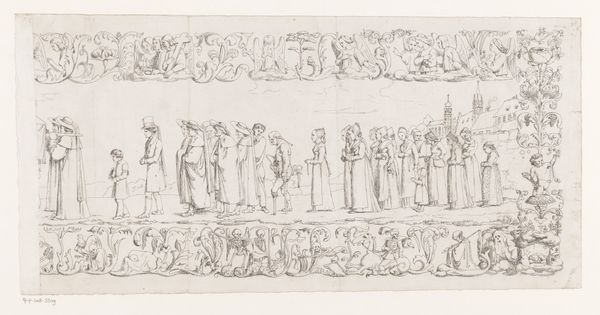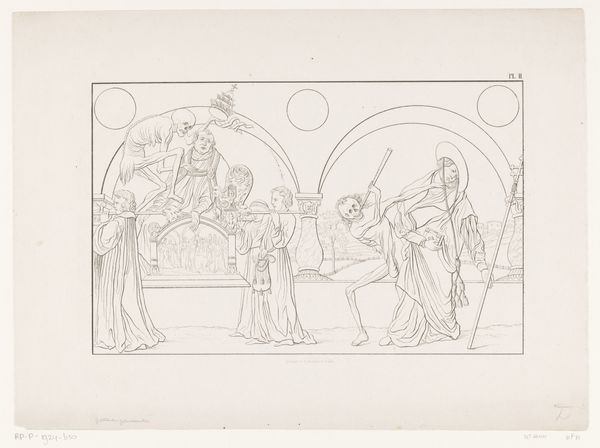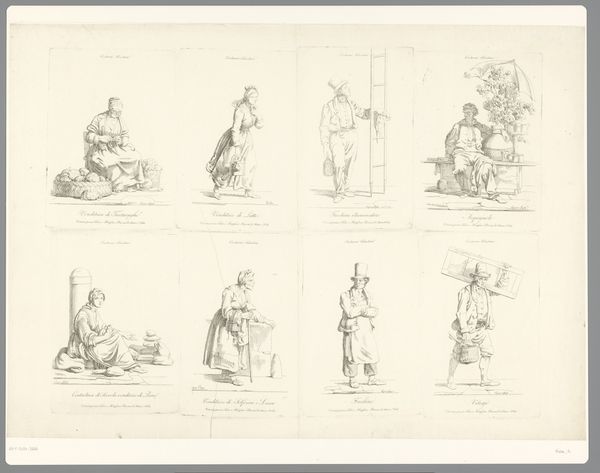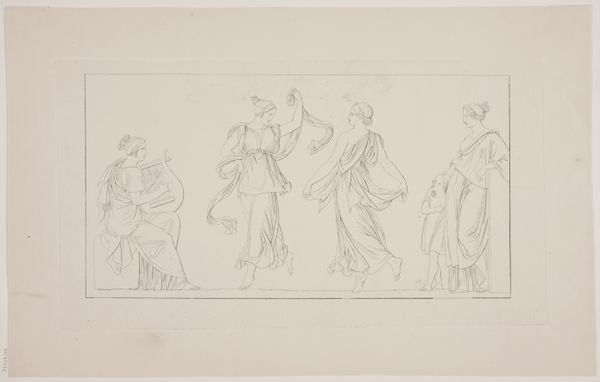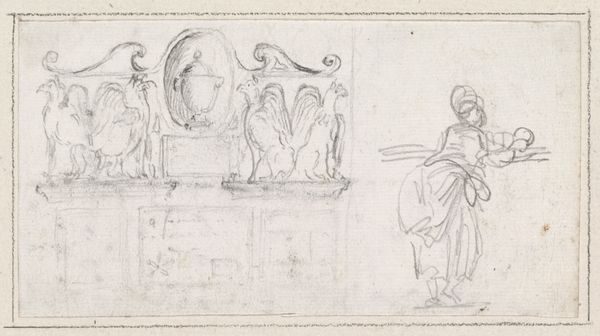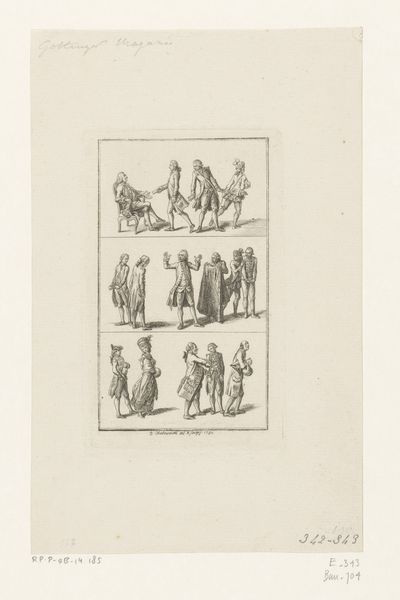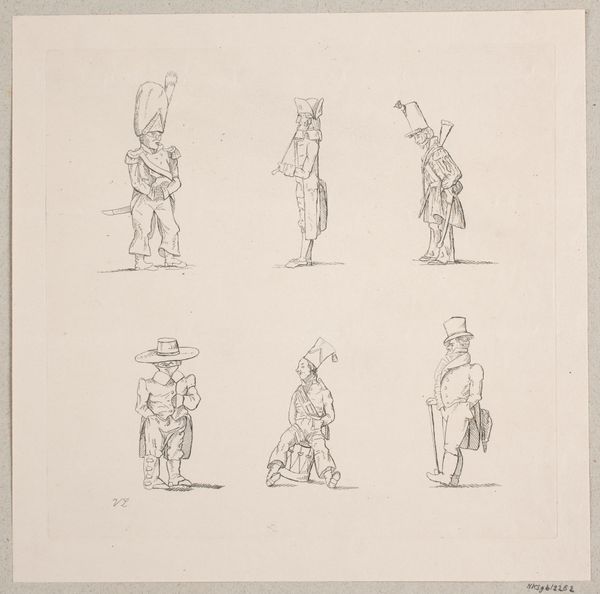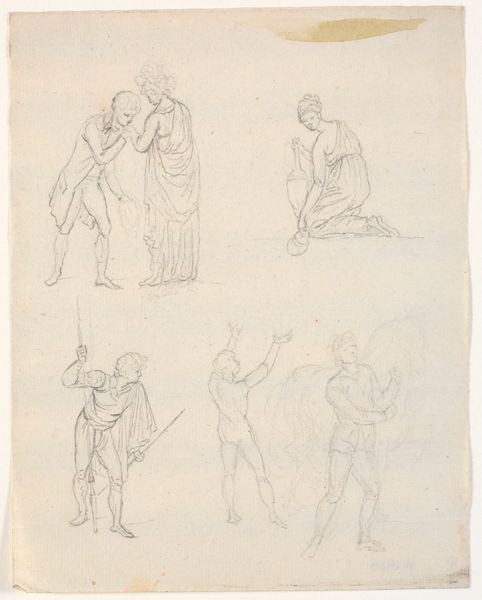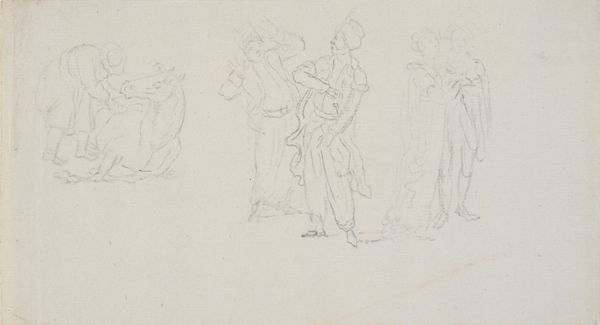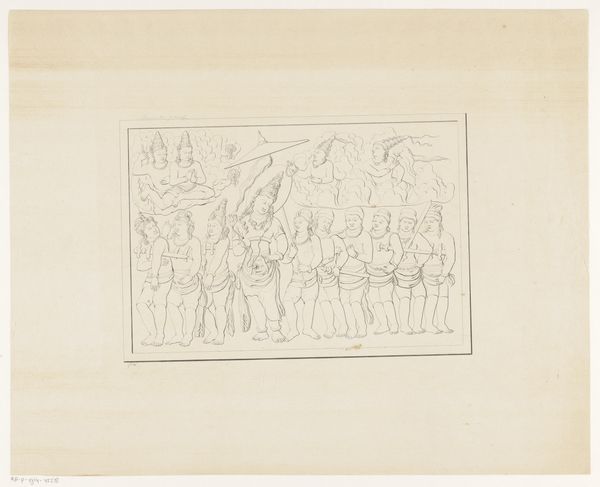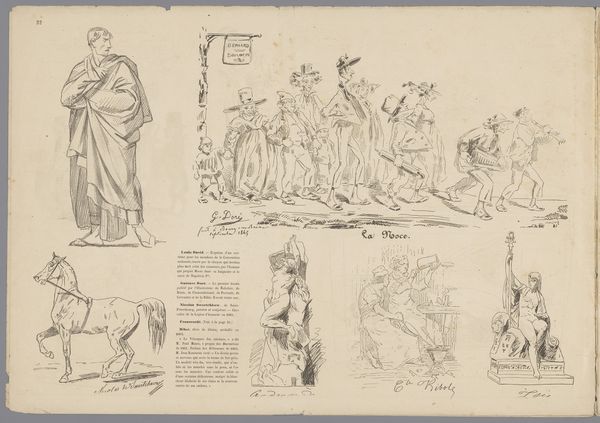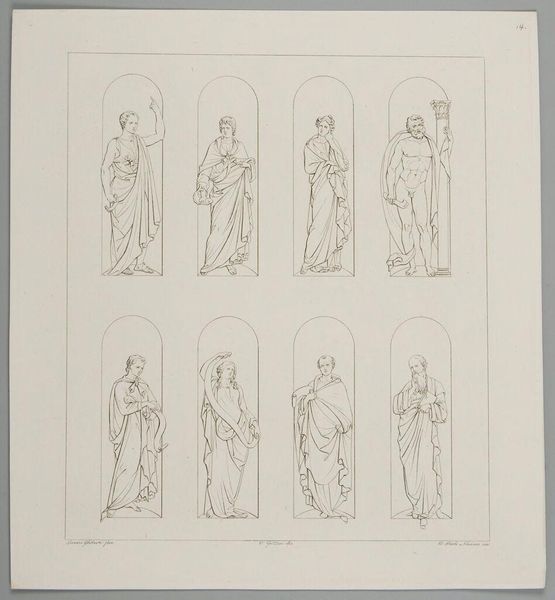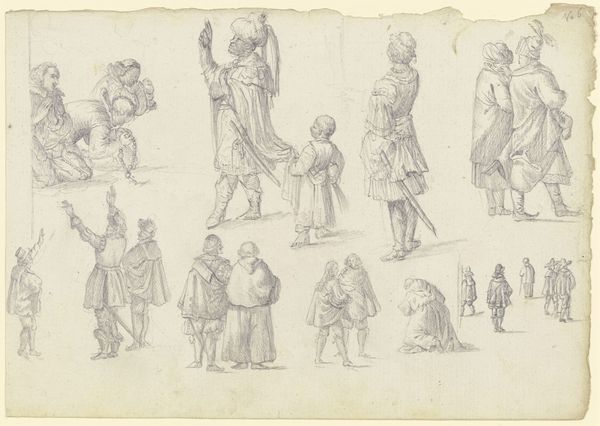
Dimensions: height 277 mm, width 462 mm
Copyright: Rijks Museum: Open Domain
Curator: This engraving, made by Leendert (I) Springer sometime before 1844, is called "Doden musiceren en dansen met religieuzen"—"The dead making music and dancing with religious figures." Quite a mouthful. Editor: It certainly sets a rather somber tone! The delicate lines and monochrome palette evoke a sense of quietude, but also an underlying unease. The scale emphasizes the frailty of existence itself. Curator: The frailty of existence, especially for the religiously devout. We're seeing the medieval theme of "Danse Macabre" presented here. Springer uses it as a social commentary. Note how death makes no distinction between social class or religious stature. Popes, kings, and commoners alike are led by skeletons. Editor: Indeed, the linear perspective seems deliberately flattened. Is it trying to collapse hierarchy visually, to suggest equivalency, or perhaps to amplify its semiotic value by abstracting its context? Curator: Precisely! It draws attention to mortality as the great leveler. Those figures of authority—look, the Pope with his mitre, a king with his scepter—they hold no power in the face of death. It suggests a deep critique of earthly power structures, especially considering the rise of secular thought at the time. This work underscores themes about the futility of wealth and the corruption of the Church. Editor: So you’re positioning this as a pre-cursor, almost a visual harbinger, of political change to come? What might have influenced the structural choices, like separating the top and bottom half? Is this an early version of modular art making where multiple images make the statement, instead of just one? Curator: Possibly, this multi-frame approach reinforces that theme, death and religious authority are inexorably linked in this dance. Springer invites the viewer to question, not just observe. Editor: Ultimately, it seems Springer wielded the dance of death motif not merely as an allegory but as an intersectional socio-political statement about class, authority, and faith. Curator: A rather sharp and pointed statement from Springer. It certainly invites critical analysis and contextualization! Editor: A fine example of how artistic structure reinforces and reflects wider social critiques.
Comments
No comments
Be the first to comment and join the conversation on the ultimate creative platform.
